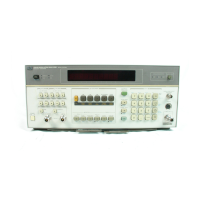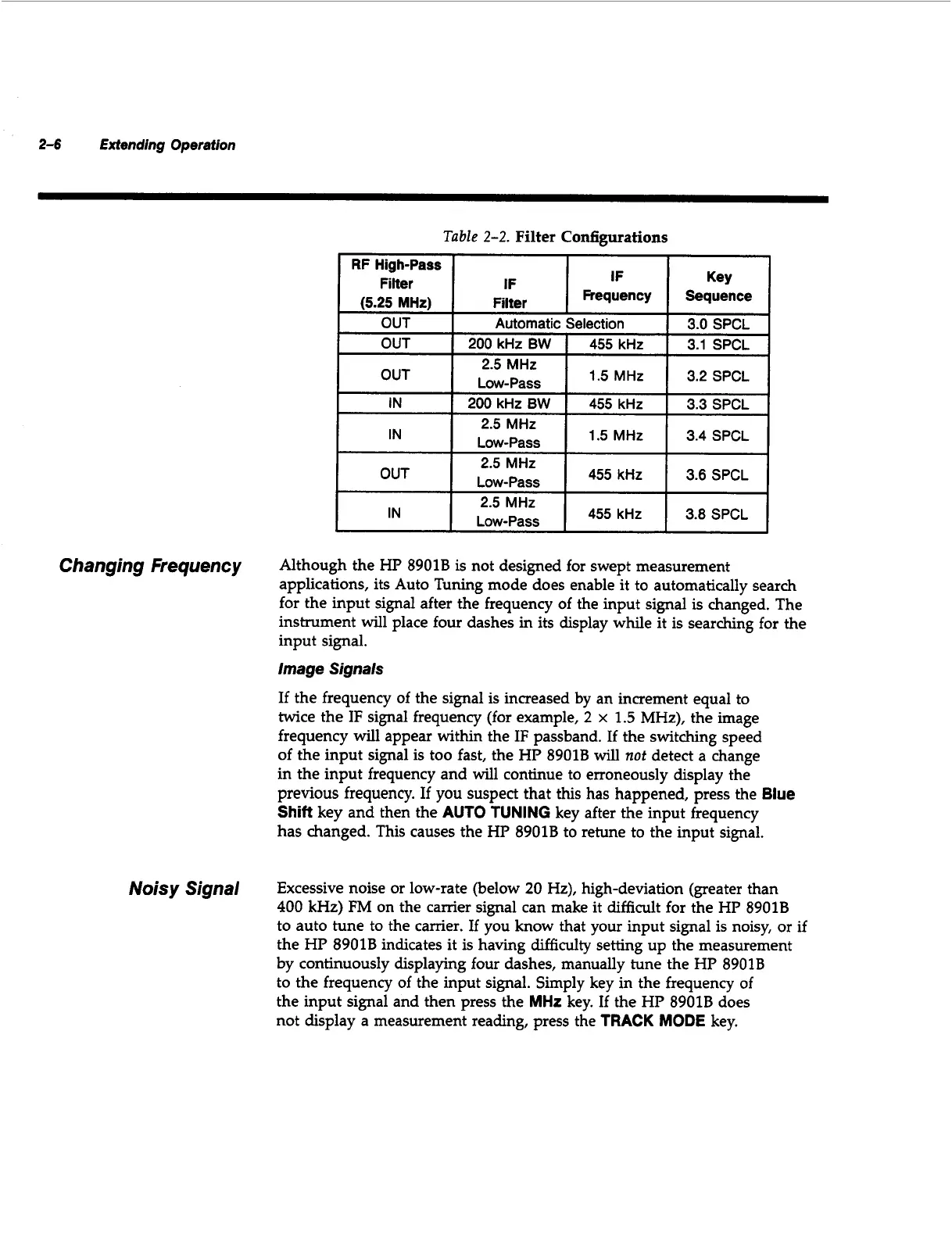2-6
Extending Operation
2.5
MHz
Low-Pass
1.5
MHz
OUT
Table
2-2.
Filter Configurations
RF High-Pass
Filter
(5.25
MHr)
Filter
Automatic
Selection
3.0
SPCL
3.1
SPCL
~ ~
__
3.2
SPCL
2.5
MHz
Low-Pass
455
kHz
IN
3.3
SPCL
1.5
MHz
3.4
SPCL
455
kHz
3.6
SPCL
2.5
MHz
Low-Pass
2.5
MHz
Low-Pass
OUT
3.8
SPCL
Changing
Frequency
Although the HP 8901B is not designed for swept measurement
applications, its Auto Tuning mode does enable it to automatically search
for the input signal after the frequency of the input signal is changed. The
instrument will place four dashes in its display while it is searching for the
input signal.
Image Signals
If
the frequency of the signal is increased
by
an increment equal to
twice the IF signal frequency (for example,
2
x
1.5
MHz), the image
frequency will appear within the IF passband. If the switching speed
of the input signal is too fast, the HP 8901B
will
not
detect a change
in the input frequency and will continue to erroneously display the
previous frequency.
If
you suspect that this has happened, press the
Blue
Shift
key and then the
AUTO TUNING
key after the input frequency
has changed. This causes the HP 8901B to retune to the input signal.
Noisy
Signal
Excessive noise or low-rate (below
20
Hz), high-deviation (greater than
400
kHz) FM on the carrier signal can make it difficult for the HP 8901B
to auto tune to the carrier.
If
you know that your input signal is noisy, or if
the HP 8901B indicates it is having
difficulty
setting up the measurement
by continuously displaying four dashes, manually tune the HP 8901B
to the frequency
of
the input signal. Simply key in the frequency
of
the input signal and then press the
MHz
key.
If
the HP 8901B does
not display a measurement reading, press the
TRACK
MODE
key.

